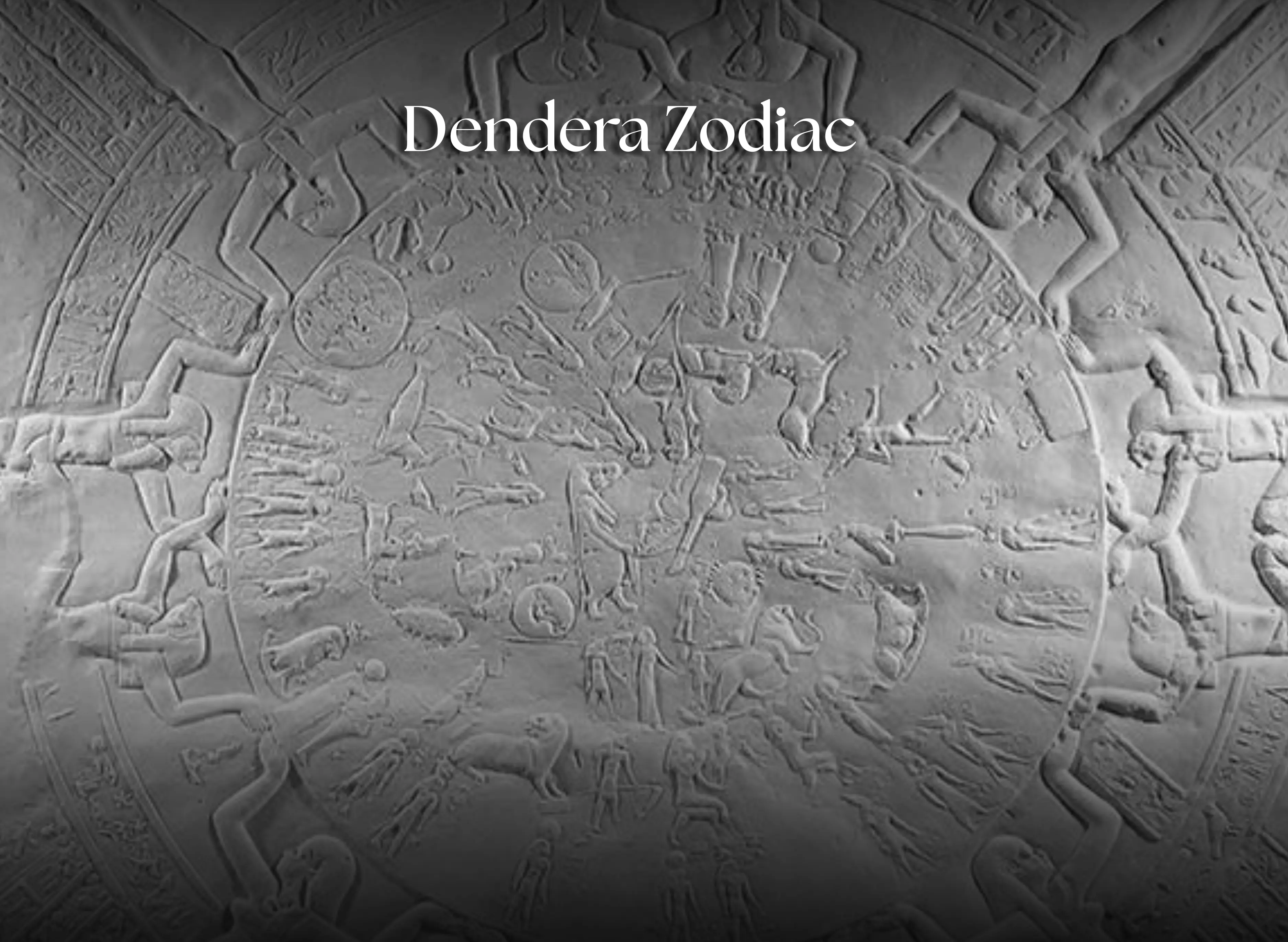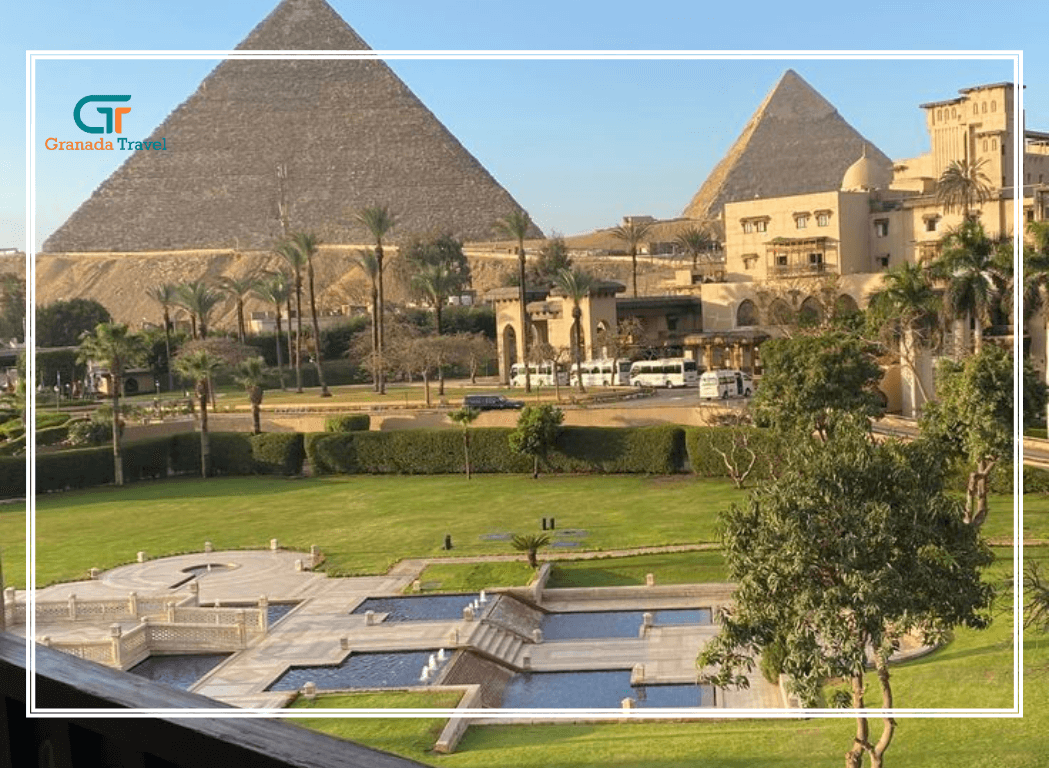
The Dendera Zodiac: Unveiling Ancient Egypt’s Celestial Masterpiece
The Dendera Zodiac is one of the most fascinating and enigmatic artifacts from ancient Egypt, a celestial map that has captivated historians, archaeologists, and astrologers for centuries. Discovered in the Temple of Hathor within the Dendera Temple Complex, this intricate bas-relief offers a glimpse into the astronomical prowess and cultural sophistication of ancient Egyptian civilization. Known as the Zodiac of Dendera, this remarkable artifact is not just a beautiful piece of art but a testament to the deep connection between ancient Egyptians and the cosmos. In this blog, we’ll explore the Dendera Zodiac, its history, symbolism, and enduring mysteries, including its age, purpose, and the controversies surrounding its interpretation.
The Discovery of the Dendera Zodiac
The Dendera Zodiac was discovered in 1799 during Napoleon’s campaign in Egypt, when French scholars and engineers encountered the breathtaking zodiac ceiling temple of Dendera. Located in the Temple of Hathor, part of the sprawling Dendera Temple Complex in Upper Egypt, the zodiac was found on the ceiling of a small chapel dedicated to Osiris. This circular bas-relief, measuring approximately 2.5 meters in diameter, depicts a detailed map of the heavens, complete with constellations, planets, and zodiac signs that bear striking similarities to those used in modern astrology.
The original Dendera Zodiac was removed from the temple in 1821 by French engineer Jean-Baptiste Lelorrain, who transported it to France, where it now resides in the Louvre Museum in Paris. A replica was installed in its place at the Dendera Temple Complex, allowing visitors on a Dendera Temple Tour to experience its grandeur. The removal of the zodiac sparked debates about cultural heritage and repatriation, but it also brought global attention to this extraordinary artifact.
Understanding the Dendera Zodiac Ceiling
The Dendera Zodiac ceiling is a masterpiece of ancient Egyptian art and astronomy. Carved in sandstone, it features a circular arrangement of celestial figures, including the 12 zodiac signs familiar to us today, such as Aries, Taurus, and Scorpio, alongside Egyptian deities and astronomical symbols. The figures are arranged in a spiral, with the constellations depicted as anthropomorphic or animal forms, reflecting the syncretism of Egyptian and Hellenistic influences.
At the center of the Zodiac of Dendera, the goddess Nut, the personification of the sky, is surrounded by representations of the sun, moon, and planets. The zodiac also includes decans, 36 star groups used by ancient Egyptians to mark the passage of time during the night. These decans highlight the Egyptians’ sophisticated understanding of astronomy, which they used for both practical and religious purposes, such as determining agricultural cycles and religious festivals.
The Dendera Zodiac explains a blend of cultural influences. While the zodiac signs resemble those of the Greek zodiac, introduced to Egypt during the Ptolemaic period (305–30 BCE), the style and symbolism are distinctly Egyptian. This fusion suggests that the Dendera Zodiac was created during a time when Egypt was under Greek rule, yet it retained its unique cultural identity.
The Dendera Zodiac Age: When Was It Created?
One of the most debated aspects of the Dendera Zodiac is its age. Determining the Dendera Zodiac age is challenging because the artifact lacks a precise date. Scholars generally agree that the zodiac dates to the Ptolemaic period, likely between the 1st century BCE and the 1st century CE, based on the temple’s construction and the Hellenistic influences in its design. However, some alternative theories propose that the zodiac could be much older, citing the advanced astronomical knowledge it displays.
The Temple of Hathor, where the zodiac was found, was built during the Ptolemaic dynasty, but the site has been a place of worship for millennia. Some researchers argue that the Zodiac of Dendera may reflect knowledge passed down from earlier periods, possibly as far back as the Old Kingdom (circa 2700–2200 BCE). This theory is controversial, as no definitive evidence supports such an early date. Radiocarbon dating and stylistic analysis point to a Ptolemaic origin, but the debate continues to fuel speculation about the zodiac’s true age.
Symbolism and Purpose of the Dendera Zodiac
The Dendera Zodiac is more than a decorative piece, it served a profound religious and astronomical purpose. In ancient Egyptian culture, the stars and planets were believed to be manifestations of divine forces, guiding human affairs and the natural world. The zodiac ceiling temple of Dendera was likely used by priests to track celestial events, align religious rituals with cosmic cycles, and interpret divine messages.
Each figure in the Dendera Zodiac ceiling carries symbolic meaning. For example, the constellation of Taurus, depicted as a bull, may be linked to the god Apis, a symbol of fertility and strength. Similarly, the presence of Sirius, the brightest star in the sky, was critical to the Egyptians, as its heliacal rising marked the annual flooding of the Nile, a cornerstone of their agricultural calendar.
The Zodiac of Dendera also reflects the concept of cosmic order, or ma’at, central to Egyptian theology. By mapping the heavens, the zodiac reinforced the belief that the gods maintained harmony in the universe, a harmony that priests sought to mirror on Earth through rituals performed in the Dendera Temple Complex.
Controversies and Mysteries Surrounding the Dendera Zodiac
The Dendera Zodiac has sparked numerous controversies, particularly regarding its interpretation and cultural significance. One of the most persistent debates is whether the zodiac represents a specific astronomical event, such as a planetary alignment or eclipse. Some scholars have attempted to “read” the zodiac to pinpoint a precise date, but these efforts have yielded conflicting results, ranging from 50 BCE to 200 CE.
Another controversy involves the so-called Dendera Light, a relief in the temple’s crypts that some fringe theorists claim depicts an ancient electric light bulb. While this interpretation is widely debunked—scholars identify the relief as a symbolic representation of a lotus flower and a snake, associated with creation myths, it highlights the allure of the Dendera Temple Complex as a source of speculative theories.
The original Dendera Zodiac’s removal to France also remains a point of contention. Many Egyptians and cultural heritage advocates argue that the zodiac belongs in its original context, within the Temple of Hathor. The debate raises broader questions about the ethics of colonial-era artifact acquisitions and the repatriation of cultural treasures.
Visiting the Dendera Zodiac Today
For those eager to explore the Dendera Zodiac, a Dendera Temple Tour offers an unforgettable experience. The Dendera Temple Complex, located near the city of Qena, is one of Egypt’s best-preserved ancient sites. Visitors can marvel at the replica of the Dendera Zodiac ceiling in the Osiris chapel, which faithfully reproduces the original’s intricate details. The vibrant colors and detailed carvings of the Temple of Hathor make it a must-see destination for history enthusiasts and travelers alike.
The zodiac ceiling temple of Dendera is just one highlight of the complex. The temple’s hypostyle hall, with its massive columns adorned with Hathor’s face, and the sacred lake used for purification rituals, offer a glimpse into the spiritual life of ancient Egypt. A guided tour can provide deeper insights into the Dendera Zodiac explained, helping visitors understand its astronomical and religious significance.
The Legacy of the Dendera Zodiac
The Dendera Zodiac remains a powerful symbol of ancient Egypt’s intellectual and cultural achievements. Its blend of Egyptian and Hellenistic elements reflects a period of cultural exchange that shaped the ancient world. As a map of the heavens, it underscores the Egyptians’ advanced understanding of astronomy, while its artistic beauty showcases their mastery of craftsmanship.
Today, the Zodiac of Dendera continues to inspire awe and curiosity. Whether you’re an archaeologist studying its historical context, an astrologer intrigued by its celestial symbolism, or a traveler planning a Dendera Temple Tour, the Dendera Zodiac offers a window into a civilization that saw the stars as a reflection of divine order. Its mysteries, its age, its purpose, and its cultural significance, ensure that it will remain a subject of fascination for generations to come.
In conclusion, the Dendera Zodiac is more than an ancient artifact; it’s a bridge between the earthly and the cosmic, a testament to the ingenuity of a civilization that looked to the stars for guidance. Whether you visit the replica at the Dendera Temple Complex or study the original in the Louvre, the Zodiac of Dendera invites you to ponder the timeless questions of humanity’s place in the universe.
[cta-actions]
The Dendera Zodiac: Unveiling Ancie…
Ready to Book?
Get in touch with us for personalized travel experiences
Contact Us
Send us your inquiry





